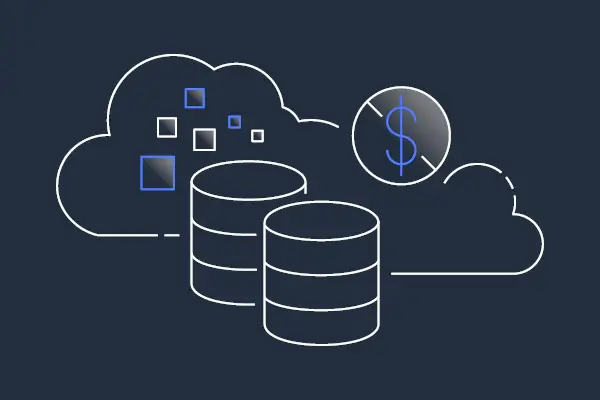· Jay Smith · Articles · 8 min read
AWS Well Architected Reviews - Optimizing Workloads
How organizations can leverage Well-Architected Reviews to optimize their AWS workloads for performance, security, and cost efficiency.

The AWS Well-Architected Framework provides a consistent set of best practices for designing and operating reliable, secure, efficient, and cost-optimized cloud architectures. It is organized around six pillars:
- Operational excellence
- Security
- Reliability
- Performance efficiency
- Cost optimization
- Sustainability
By reviewing cloud architectures against this framework, companies can identify gaps and areas for optimization. The framework provides a way to evaluate architectures and implement remediation recommendations to achieve desired business and technical outcomes. Well-Architected Reviews help ensure alignment with these cloud architecture best practices.
Overview of Well-Architected Framework Reviews (WAFRs)
Well-Architected Reviews evaluate cloud architectures against the Well-Architected Framework to identify opportunities for improvement. In a Well-Architected Review, a team of experts examines the architecture of a high priority workload to:
- Review the architecture against framework best practices across all pillars
- Identify any gaps or areas of misalignment
- Assess the current architecture and provide an unbiased risk assessment
- Develop a prioritized remediation plan to address identified issues
- Help organizations improve systems design and optimize workloads
Reviews ultimately help customers build cloud solutions that align with best practices and the Well-Architected Framework. This enables companies to achieve desired business and technical outcomes from their cloud investments.
Some key activities in a Well-Architected Review include:
- Answering the Well-Architected review questions for each pillar
- Documenting architecture details and collecting evidence
- Identifying architectural risks across pillars
- Prioritizing any high or medium priority risks
- Developing a remediation plan and improvement roadmap
- Monitoring ongoing progress and metrics
Continuous improvement is a major focus of Well-Architected. Reviews should be conducted regularly to optimize workloads as business needs evolve.
The output of a review is a clear set of prioritized recommendations that can be implemented to remediate issues. This enables organizations to incrementally improve architecture.
Well-Architected Reviews provide a systematic, standardized way to assess and optimize cloud architectures over time.
Benefits of Well-Architected Reviews
Conducting regular Well-Architected Reviews provides many benefits:
- Improve reliability and performance of critical systems
- Identify weak points and failures
- Reduce downtime and meet SLAs
- Ensure smooth operations
- Enhance security and compliance
- Close gaps in security posture
- Implement best practices for data protection
- Reduce risk of attacks or unauthorized access
- Optimize costs of cloud workloads
- Right-size resources to workload needs
- Leverage savings from Reserved Instances
- Eliminate waste and stop unused resources
- Keep pace with new AWS services
- Learn about latest features
- Identify services to improve architecture
- Maintain alignment with AWS best practices
- Align business and IT goals
- Bring key stakeholders together
- Collaboratively prioritize improvements
- Optimize architecture for business outcomes
Additional benefits include:
- Finding higher quality solutions to problems
- Improved customer satisfaction
- Better system performance and efficiency
- Increased infrastructure stability and scalability
- More efficient operations and development cycles
By leveraging Well-Architected Reviews, organizations can incrementally improve their cloud architectures. Regular reviews ensure architectures adapt to business needs while remaining secure, reliable, and cost optimized.
Reviews ultimately provide an actionable path forward to remediate issues, reduce risks, and optimize cloud workloads. This enables companies to realize the full business value of their cloud investments.
Preparing for a Well-Architected Review
Careful preparation is key to conducting an effective Well-Architected Review. Here are some best practices for getting ready:
- Select a target workload
- Focus on a critical workload or system
- Ideal to start with a new or priority workload
- Assemble the review team
- Include workload owners and stakeholders
- Identify subject matter experts across pillars
- Collect architecture information
- Gather diagrams, documentation, narratives
- Understand workload components and processes
- Use the AWS Well-Architected Tool
- Enables tracking, documentation and reporting
- Provides question context and best practice details
- Define the review scope
- Select pillars and lenses to focus on
- Balance breadth vs depth of review
- Confirm participant commitments
- Set expectations on time and effort
- Ensure stakeholder availability and support
- Schedule the review
- Block time for sessions and follow-ups
- Allow preparation time for participants
- Send pre-reads
- Share background materials beforehand
- Allow participants to gather evidence
Thorough preparation enables participants to engage fully during the review, share insights, and have a productive discussion.
After preparation, a kickoff meeting can align all participants on goals, scope, and logistics.
Well-Architected Reviews take dedication and time. Setting clear expectations for stakeholders and participants is critical for a successful review. Leveraging the AWS Well-Architected Tool and assembling the right cross-functional review team ensures you have the expertise to thoroughly assess the target workload and propose impactful improvement recommendations.
Conducting the Review
The actual review is an interactive, collaborative session that examines the target workload against the Well-Architected Framework.
Here are some best practices for conducting the review:
- Walk through the Well-Architected questions for each in-scope pillar
- Capture comprehensive documentation and notes in the Well-Architected tool
- Focus conversations on validating best practice implementation
- Avoid deep technical discussions - stay within scope
- Identify risks across reliability, security, cost optimization, etc.
- Prioritize high and medium priority risks
- Assign owners to lead remediation for each risk item
- Set initial timelines for planned improvements
- Capture follow-up actions and next steps
The review should focus on:
- Gaps between the current and desired architectures
- How well practices are implemented
- Identifying risks and their potential impacts
- Discussing improvement opportunities
Conversations during the review should be open, honest dialog centered on learning, not finger pointing. The goal is assessing the workload’s alignment with the Well-Architected Framework and compliance with cloud best practices.
The output of the review is a set of clear, actionable remediation recommendations that can be used to incrementally improve the workload. Organizations can then begin working through priority improvements and optimizing the workload.
Regular reviews on critical workloads ensure your architecture continues adapting to business needs while remaining secure, reliable, and cost-efficient.
Developing a Remediation Plan
After the review, the next step is developing a remediation plan to address identified risks and improvement opportunities.
Some best practices for creating the remediation plan include:
- Prioritize risks - Focus on high impact, quick win opportunities first
- Create a risk treatment plan
- Define remediation actions for each risk
- Assign risk owners
- Set target remediation dates
- Outline a roadmap and timeline for addressing identified issues
- Define metrics to measure progress and improvement
- Document updated processes, training or other needs
- Assign ownership for improvement initiatives
- Determine implementation approach
- Incorporate improvements into existing processes
- Launch dedicated initiatives
- Secure commitment and resources for planned work
- Develop contingency plans and risk mitigation strategies
The remediation plan provides an actionable roadmap to incrementally improve the workload’s architecture over time.
The plan should focus on addressing high priority risks and quick wins first to show progress. Efforts should then turn to medium and low risks.
Ongoing communication and coordination is crucial to execute the remediation plan across various teams. Regular check-ins and progress reports will keep improvement initiatives on track.
Well-defined remediation plans turn the identified gaps and opportunities from the Well-Architected Review into concrete actions. This enables organizations to methodically improve their cloud architectures, operations, and processes.
Implementing Recommendations
Once the remediation plan is defined, execution involves working through the improvement backlog and addressing identified risks and issues.
Some best practices for implementing Well-Architected review recommendations include:
- Apply security improvements first to remediate vulnerabilities
- Improve reliability and availability of mission-critical components
- Refine processes for greater operational excellence
- Optimize system performance and scalability
- Reduce costs by eliminating waste and unused resources
- Automate manual processes to improve efficiency
- Right-size resources based on workload needs
- Train staff on updated practices and processes
- Monitor progress metrics and key performance indicators
- Celebrate successes and milestones along the journey
The implementation approach will vary based on the organization and specific improvements identified. Some common methods include:
- Roll improvements into existing team processes
- Launch dedicated projects and initiatives
- Assign each risk to an owner for remediation
- Engage external partners as needed for expertise
Ongoing communication, coordination and commitment across teams is key for a successful implementation. Regular check-ins ensure accountability.
Well-Architected Reviews should be conducted on a regular basis to continually inspect and adapt the workload architecture as business needs evolve.
Incremental improvements address the gaps between the as-is and to-be architectures. Over time, organizations can significantly optimize their cloud solutions, operations and processes.
Achieving Continuous Improvement
The Well-Architected Framework promotes continuous improvement of cloud architectures.
Some best practices to achieve ongoing progress include:
- Conduct Well-Architected Reviews regularly (e.g. quarterly, annually)
- Review critical workloads and new initiatives first
- Compare review findings to establish a baseline
- Maintain a prioritized backlog of improvement initiatives
- Monitor progress against identified metrics and KPIs
- Celebrate successes to build momentum
- Incorporate lessons learned back into architecture
- Update documentation as improvements are implemented
- Refresh component and architecture designs periodically
- Evaluate new AWS services and features
- Retrain staff on evolving best practices
- Automate policy enforcement and monitoring where possible
The iterative process of regular assessments and improvements ensures alignment with the Well-Architected Framework is maintained over time.
Continuous improvement is supported by:
- Ongoing leadership commitment and support
- Dedicated teams and personnel
- Aligned policies, processes and tools
- A culture focused on quality and optimization
Well-Architected Reviews provide the baseline and direction for improvement efforts. But true optimization occurs by embedding the principles across people, processes and technology.
The framework enables organizations to incrementally improve their cloud solutions and operations. Maintaining Well-Architected discipline through continuous improvement delivers architectures capable of supporting business success both now and in the future.
Looking for help with AWS services or other advanced cloud technologies? The IT professionals at God Particle IT Group have the skills and experience to architect, build, and manage complex systems at scale. We specialize in cloud platforms like AWS and can provide enterprise-level support to develop and operate your applications and business functions. Whether you need assistance with design, implementation, optimization, or managed services, contact us to see how we can help launch your next innovation. With deep expertise across today’s leading technologies, God Particle IT Group offers responsive, high-touch services to innovate faster.




